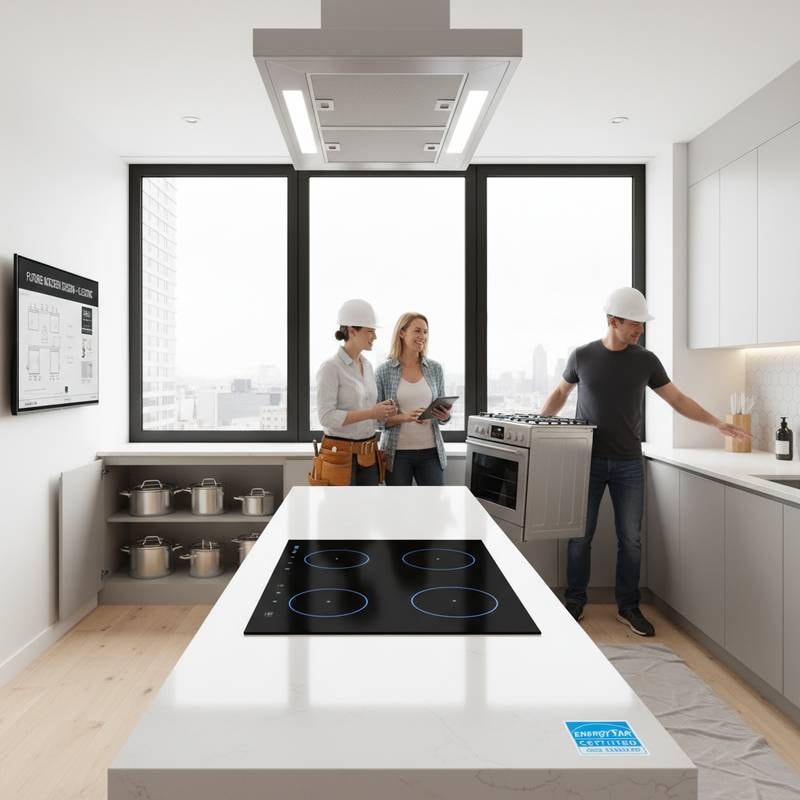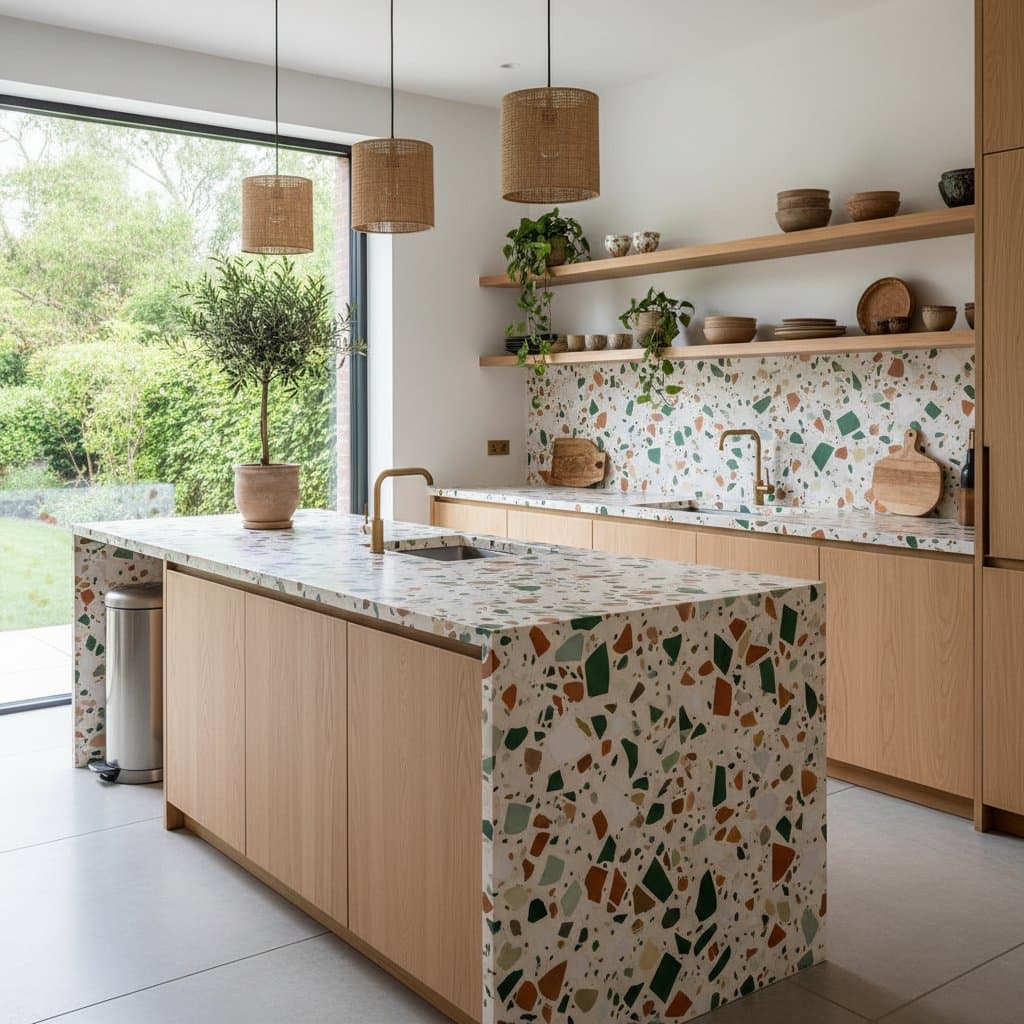Why Induction Outperforms Gas in Contemporary Kitchens
Professionals who install kitchens observe a clear transition from gas to induction cooking. Homeowners, once loyal to gas flames, now request replacements with induction units. This evolution stems from tangible improvements in performance, safety, and daily usability.
For those contemplating a kitchen renovation, consider the realities of current installations. Gas served its purpose, yet induction emerges as the superior option for today's homes. The following sections detail the reasons.
Key Advantages of Induction Cooking
Initial encounters with induction technology may raise doubts about its reliability. However, practical applications reveal substantial benefits that extend beyond promotional claims.
Rapid and Precise Heating
Induction employs electromagnetic fields to heat cookware directly. Burners respond without delay, allowing immediate boiling or temperature adjustments. This precision suits cooks who demand control.
Comparisons with premium gas ranges demonstrate induction's edge in speed. Such efficiency enhances convenience and reduces energy consumption.
Streamlined Aesthetics and Maintenance
The flush-mounted design of induction cooktops integrates seamlessly with countertops, aligning with contemporary styles. Installation proceeds efficiently, and upkeep remains minimal.
After use, the surface cools rapidly for simple cleaning with a damp cloth. No need for disassembly or abrasive cleaners eliminates residue accumulation.
Enhanced Safety Features
Safety concerns often influence family decisions. Induction surfaces remain cool outside the cookware area, and heat ceases upon pan removal. Integrated shutoff mechanisms prevent accidents, such as utensil damage.
These elements secure the kitchen environment while preserving cooking capabilities.
Improved Air Quality
Transitioning to induction yields noticeable freshness in the kitchen post-cooking. Absence of gas odors and excess heat maintains better indoor conditions. Growing recognition of pollution's long-term effects amplifies this advantage.
Addressing Induction Misconceptions
Resistance persists despite evident strengths. Below, common concerns receive clarification based on observed realities.
Cookware Compatibility
Magnetic cookware proves essential, yet compatibility extends to many existing items. Stainless steel and cast iron pieces function effectively. A magnet test confirms suitability for the base.
Clients frequently upgrade during the switch, further optimizing results.
Professional Suitability
Chefs increasingly select induction for superior regulation and responsiveness. Exact temperatures sustain simmers without burning, and delicate tasks like chocolate melting occur directly. Open flames struggle to replicate such accuracy.
Cost Considerations
Affordability has improved markedly. Comparable models to mid-range gas units now exist at similar prices. Accounting for reduced energy and maintenance, long-term expenses favor induction.
Energy Consumption
Efficiency defines induction, with over 85 percent of energy transferring to the cookware. Gas dissipates much heat into the air. Electrical upgrades during renovations accommodate induction without issue.
Steps for Transitioning to Induction
The conversion from gas demands preparation, though the process proves manageable. Guidance for clients follows this sequence.
Assess Electrical Infrastructure
Induction requires adequate power capacity. Modern homes typically suffice, while older structures may necessitate panel enhancements. An electrician verifies through inspection.
Secure the Gas Line
Professional intervention ensures safe capping by a licensed plumber. This prevents leaks and upholds insurance coverage.
Select Appropriate Dimensions
Standard widths measure 30 or 36 inches. Replacing a gas range might involve minor cabinet adjustments. Precise measurements precede purchases.
Optimize Ventilation
Lower heat output and no emissions allow for compact, quieter hoods. Some opt for downdraft alternatives, eliminating overhead units.
Adapt to Interface
Digital controls replace physical knobs. Familiarity develops quickly, revealing unmatched precision over gas equivalents.
Industry Shifts Driving Adoption
Induction's popularity reflects broader influences.
- Evolving building regulations prioritize electric appliances.
- Manufacturer innovations yield advanced, cost-effective options.
- Heightened air quality consciousness promotes safer choices.
- Efficiency objectives encourage reduced reliance on gas.
Contractors recognize this as a fundamental redesign of kitchen spaces. Leading brands stock induction lines, and suppliers adjust accordingly.
Resale and Enduring Benefits
Queries about property value arise frequently. Induction enhances appeal positively. Prospective buyers seek efficient, updated kitchens indicative of thoughtful maintenance.
Recent projects highlight induction as a key selling point. It conveys alignment with emerging standards. While gas retains niche appeal, younger demographics prioritize intelligent, secure systems.
Implementing the Upgrade
Remodel timing aligns well for induction integration. Benefits manifest swiftly after a brief adjustment period. Consult contractors on electrical needs and configurations, ensure gas line sealing, and specify cooktop dimensions.
Extensive experience with both technologies confirms induction's superiority in cleanliness, safety, and efficiency. Cleaning demands lessen, energy costs decline, and cooking enjoyment increases.
Kitchens remain central to home life. Induction sustains this vitality through cleaner, more intelligent operation. Adoption leads to lasting satisfaction.









